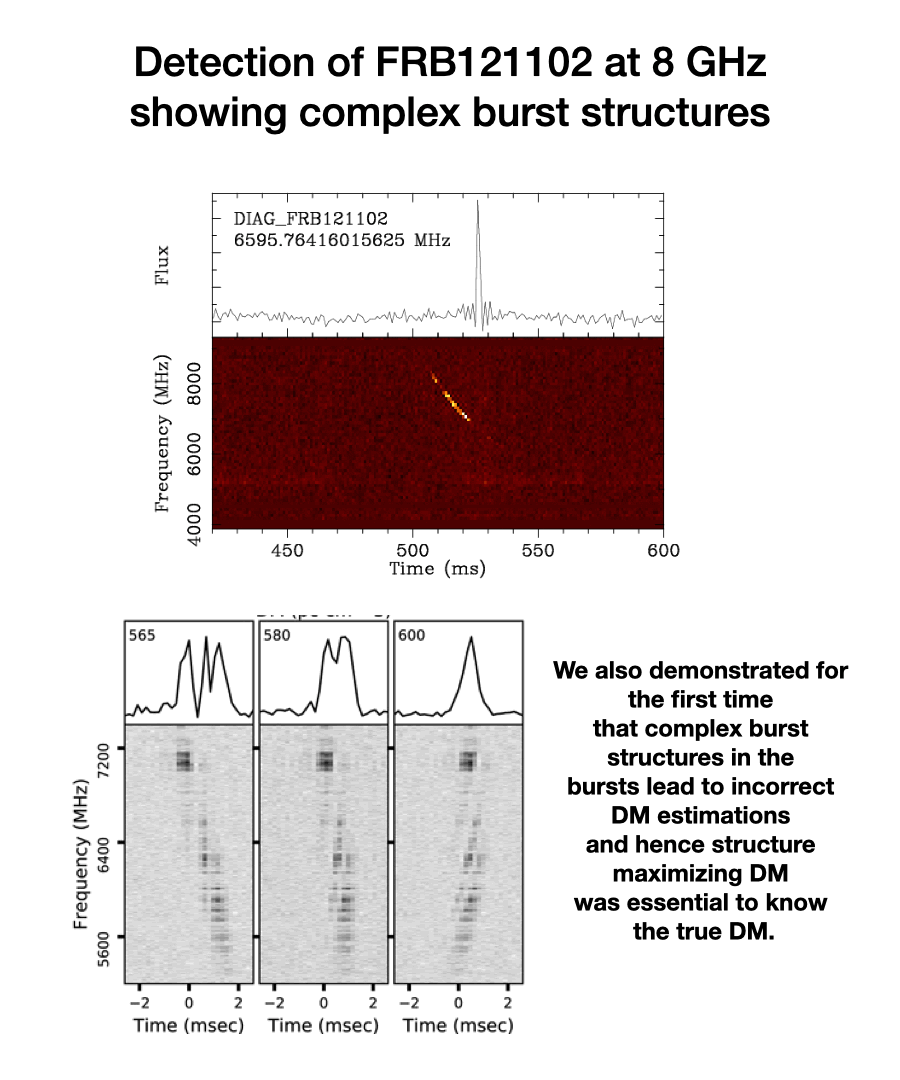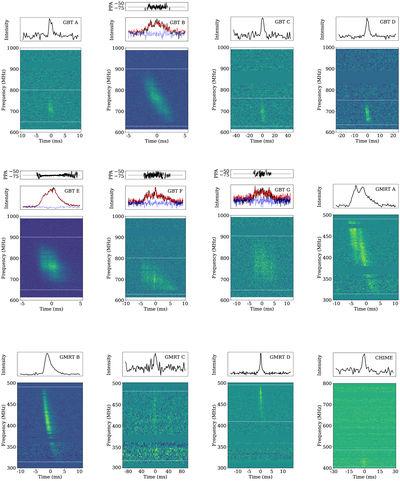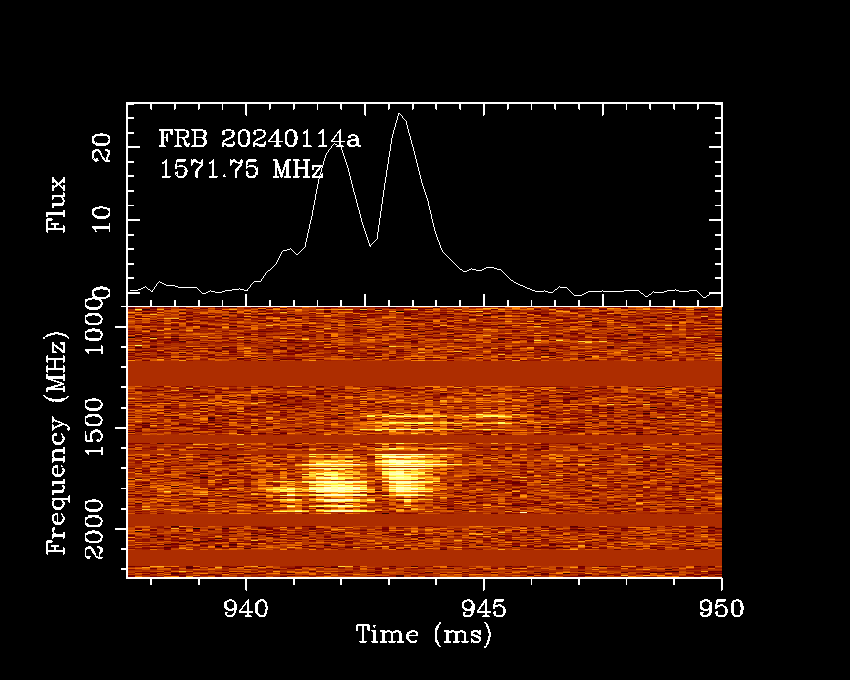
First highest frequency detection of FRB
We reported the first detections of the repeating fast radio burst source FRB 121102 across 4 -- 8 GHz receiver of the GBT with the Breakthrough Listen digital backend. We found 21 bursts within the first 60 minutes of a total of 6 hr of observations. At the time of these detection, these observations were the highest burst density reported in the literature, with 18 bursts being detected in the first 30 minutes. A few bursts clearly show temporal sub-structure with distinct spectral properties. These sub-structures superimpose to provide an enhanced peak signal-to-noise ratio at higher trial DM. The most important finding was that the bursts exhibit nearly 100% linear polarization, and a large average rotation measure of around 10^5 rad m^-2 (in the observer’s frame). No circular polarization was found for any burst. These detections were combined with another set of detection made with the Arecibo telescope which was published in Michilli et al. (2018) and created quite a flurry of news.


